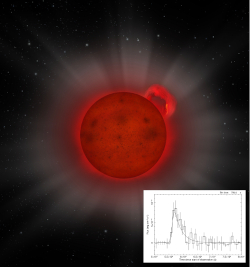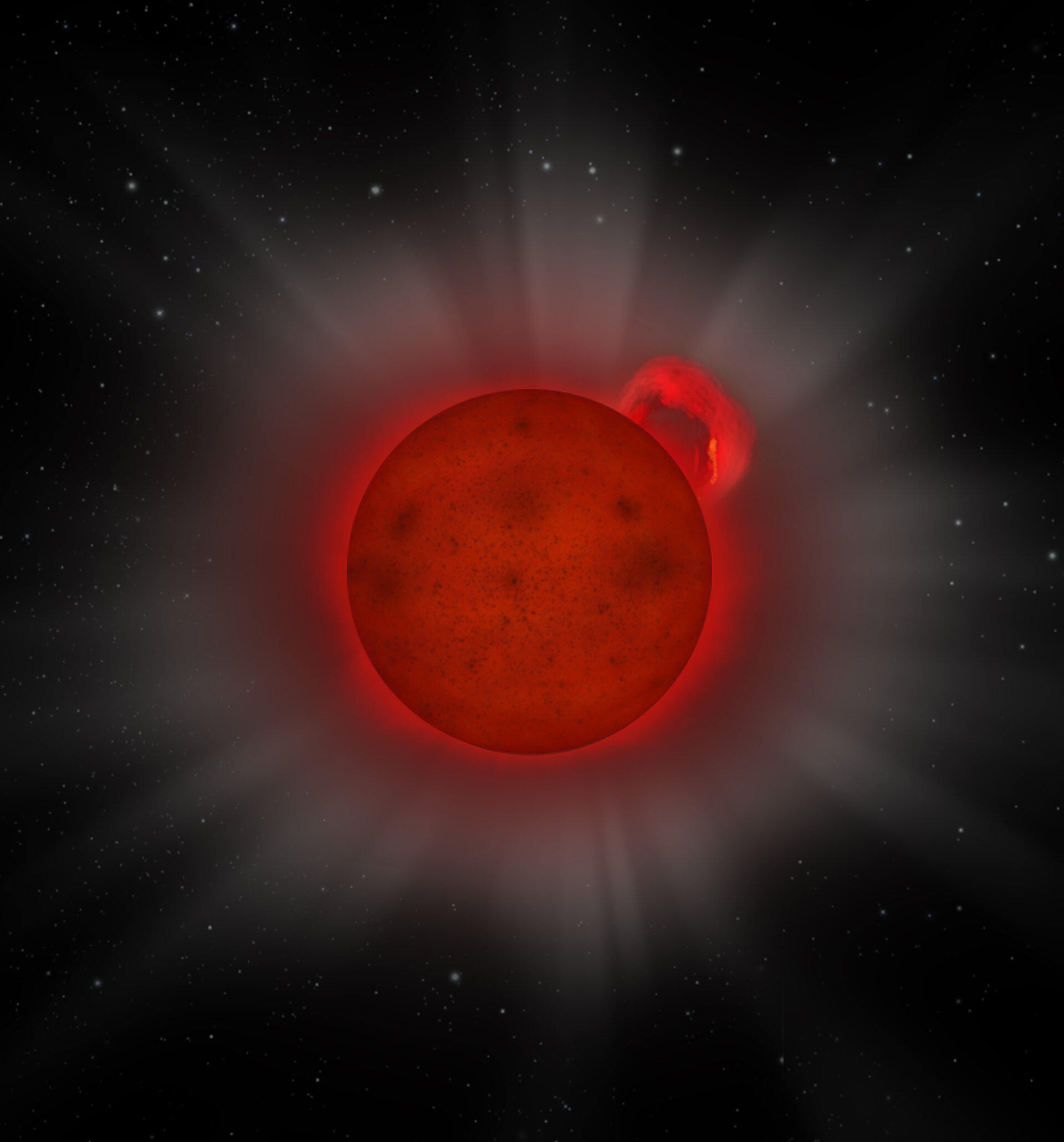Stars are superheated
plasmas, balls of gas so hot electrons are stripped from their atomic nuclei. Gravity causes pressure and temperature to increase from the star's surface to the center, and the inward increase in temperature and pressure can cause hot plasma inside the star to rise, move outward, cool off, then sink back down, a
convective motion similar to the boiling of hot water in a pot on your stove. Stars also rotate (and perform other motions), and convective motions of plasma in a rotating star generates electrical currents that produce a global magnetic field (in most stars, anyway; stars with a mass of about eight times the mass of the Sun or more only show measurable magnetic fields in rare circumstances). As stars spin, their magnetic fields get tangled up, and if they get too tangled they can intensify, producing
potentially catastrophic results. Tangled magnetic fields can lead to strong
stellar flares, outbursts of
matter and energy, which can damage any planet that happens to be in the line of fire. In 2008 observations with the
XMM-Newton X-ray observatory discovered a surprisingly strong stellar flare. The most surprising thing about this flare was that it came from a tiny, cool star so non-descript it's known only by its catalogue number, J0331-27. This star is a
brown dwarf, only a bit more massive than the planet Jupiter. Yet somehow it managed to emit a powerful stellar "
superflare" more than ten times as energetic as any flare ever seen from our Sun. The image above is an artistic representation of what a brown dwarf might look like, with a magnetically-supported loop over a magnetically-active region of the star's surface. The inset shows the increase in X-rays from the star seen by XMM-Newton. Why and how this happened is yet to be determined, and we've yet to see similarly strong flares from other similarly small stars. It does lead you to wonder: could
Jupiter ever explode?
 HEAPOW: The Dwarf that Roared (2021 Dec 06)
HEAPOW: The Dwarf that Roared (2021 Dec 06)
